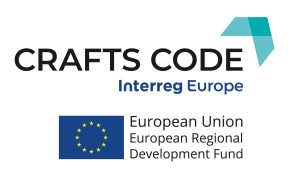The Festival is a 4-day programme for the transfer of folk handicraft traditions in order to help young people choose careers and transfer knowledge.
The main purpose of the Festival of Folk Arts is to carry on and preserve old traditions and to share knowledge across generations. The programme is a platform that brings together different generations, the craft industry itself and helps young people make a career choice. Old and rare crafts are a of particular high priority in the bottom-up initiative of the programme. It has also been included in the UNESCO National Heritage List as a good practice for passing on folk crafts.
The value of the event is that the participation of professional communities is supported. The organisers apply for funding and can finance the participation of approx. 800 traditional craftsmen of 60 organisations per year through ticket revenue and subcontractors. In this way, 800 masters are supported by the festival organisers through reimbursement of their accommodation, travelling and transport costs, and they are provided with a free area to introduce themselves and in return they operate showrooms, playhouses and handicraft shows.
Every year approximately 70,000 people attend the 4-day events including costume and fashion shows, stage programmes, folk pubs, dance performances, dance houses with world and folk music and last but not least traditional folk gastronomy.
This is the most prestigious annual event for artisans accompanied by professional talks and a celebration that brings together locals and foreigners, the young and seniors alike.
Resources needed
-approximately 361000 EUR
-support from several Hungarian funded programmes (e.g. ~56000 EUR from the National Cultural Fund, ~56000 EUR from the Csoóri Fund)
-additional funds: participation fees and ticket sales
-appropriately sized site needed
-3 full-time staff, 50 contracted staff
Evidence of success
-approximately 800 participants each year, 70,000 people attend the programme
-150 foreign craftsmen from around 10-15 countries take part in the event each year
The success of the programme is also evidenced by the attendance of the cultural sector representatives from other countries (e.g. Norwegian cultural directors, Swedish craft schools). One of the benefits of the festival is a project funded by the UN FAO in Uzbekistan and Kyrgyzstan.
Difficulties encountered
-difficult to raise the funds, ticket revenue and sponsorship do not cover expenses, income is difficult to plan
-there is a continuing uncertainty because of the lack of resources
-bad weather causes great loss of revenue. If the event is unprofitable any losses are covered by the organisers
Potential for learning or transfer
-the concept can be easily and quickly transferred to another region or country
-there have already been lectures on the concept in Asian countries, for example in Uzbekistan and in China
-It is not a simple fair, but also a community-building programme and the annual meeting of the profession, a knowledge transfer platform. It is important to have high-quality, interactive presentations for those interested in the professions. Children can be introduced to the crafts at an early age.
-excellent opportunities for cultural and knowledge transfer
-it can be successfully translated into practice in another region or country if there is already a craft community or a craft institution present
-the name and concept are protected, but the organisers are willing to share and transfer knowledge and know-how.
Please login to see the expert opinion of this good practice.
Tags: Conservation, Creative, Event, Heritage, Learning, Youth, Awareness, Community, COVID-19, Education, Manufacturing








